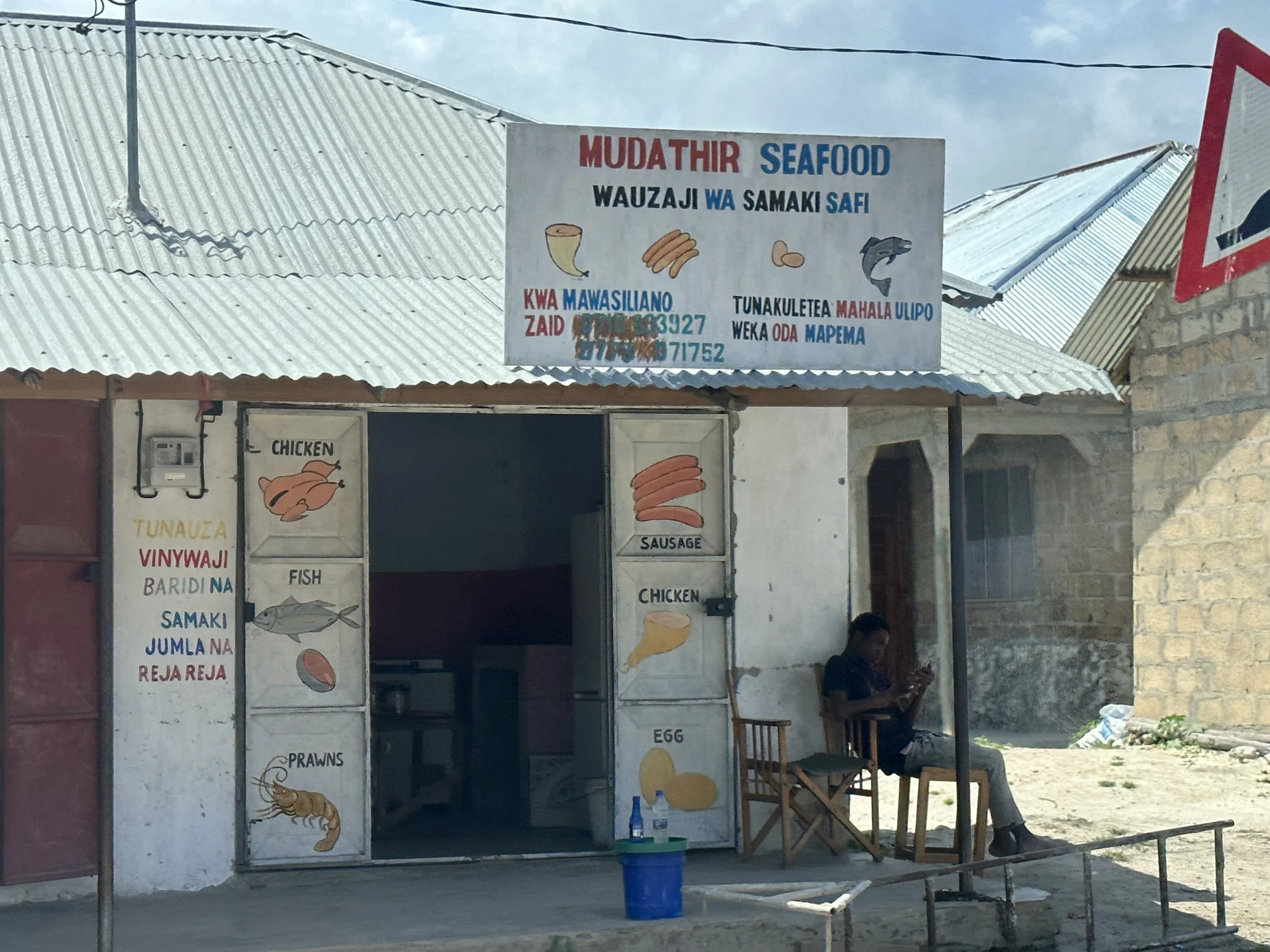ZANZIBAR STREET ART
Meeting with Hungarian visual artist and researcher, Dáriusz Gwizdala
Sprinkled throughout Zanzibar, on school walls, homes and shops, are original hand-painted artworks that exhibit Creative Exterior Design and color the landscapes of Zanzi-Visual Arts. These street arts create urban opulence on buildings and lie inland from the hostels and beach shops where the tourist gaze lounges. Business people and educators put on the hat of artists, and artists become business people and educators, to adorn the island with visual and graphic information, also functioning as advertisement for goods and services. Their economically engaging works are beautiful and charming, they elevate the islands streetscapes and distinguish Zanzibar’s marketplace. Should a shop change from selling shoes to selling car parts, the change in business demands that previously painted-advertisements be painted over by new art that fits the needs of the new building. This business-driven temporality births art pieces that are layers deep and leaves the history of the walls covered over time.
While investigating art in Paje, Zanzibar, I was introduced to Hungarian visual artist and researcher Dáriusz Gwizdala. Two years ago he fell in love with the Zanzi-graphic arts, pulled in by his interest in graffiti and stylized painting. Desiring to document paintings from throughout Zanzibar, he took his camera and began to record the ever-changing walls of the island, to nourish the movement and appreciation of street artists in Zanzibar. His research confronts temporality and the artists’ creative exploration, to direct and encourage admiration of the fluid and beautiful Zanzi-Street-Art models.
He and his team picked the highlights from their collection of 900 images, and organized an exhibition at Simply Street Art Museum Zanzibar, in December, 2023. His photo-collection places Zanzi-Street Art at the intersections of art curation and art research. The creative framing and juxtaposition of the collection emphasizes their diversity in style and scale, a delight for art lovers. This stylistic range is a refreshing and inspiring contrast to the monologue of art sold in beach-side shops. Gwizdala has found that the individual care and creativity of street art is a stark contrast to the styles which flood the tourist marketplace in Zanzibar. These arts aimed for tourists are often made in one of few styles which were once original to someone, and are now popularly mass-reproduced.
“I hear the locals refer to these [street arts] as fundi, which is a totally different thing because these are unique artworks, somehow part of the everyday life and full of details”. Fundi is a Swahili word meaning “technician’ or “technical” and is used colloquially in Tanzania to imply handmade crafts that can be perfected and reproduced. The points of perfection and reproduction are what distinguish street art from fundi art, as they are original, stylistic artworks that exist on a locationally fixed canvas.
“We’re trying to identify the most encouraged artists behind this movement, but its really hard because I usually deal with the shop owner, and sometimes the pictures are so old that they don’t know who painted them, or maybe the art was there before they owned the building. But a few times we find signatures and mobile numbers, some which are working and some which are not”.
- Dáriusz Gwizdala
Gwizdala hopes to encourage street artists and Zanzibar youth to lean into their own creative practice. Because of this, his team often works with schools and local children to make murals around the island.
Guest house mural painted with local children from Paje
Schoolhouse mural in Paje
The photos in this garden where set up in a Paje resort, rearranged and framed by recycled PBC tarpaulin material from around the island.
To see more visit on Instagram
Thank you to the Artists of Zanzibar for coloring the island with Creative Graphic Arts. And a very special thanks to Dáriusz Gwizdala and the work of his team, for the commitment to contextualize, document and spotlight Zanzibar Street Art.
What a joy it was to see.
























